The Outer Banks seems to attract more than its share of artists of all kinds. Certainly, there are some remarkably talented painters and jewelers here. There are truly some world-class photographers here as well.
And then there are the writers—the authors of some wonderful books. Some of it’s fiction, some history, and some of the best children’s books to be found anywhere.
Although some of the best of the local writers have passed away, a quick look at a few of the new books in print gives a lot of hope that the tradition of great authors living on the Outer Banks will continue.
It’s a diverse group of writers, and we know we’re going to miss a few, but here’s a list to start things off.
The Best Selling Author
Matthew Quick.
The author of Silver Linings Playbook does indeed live on the Outer Banks. Silver Linings Playbook is certainly his best known work, but some of his other words, especially We Are the Light, are worth picking up.

A master at mixing humor and pathos, Quick’s novels often include sessions of laughter and tears, sometimes simultaneously. And, it cannot be emphasized enough—these are very well written books.
Recently Released
The Bittersweet Voyage of the Golden Ship Hatteras by Ira David Wood III
Technically Ira David Wood does not live on the Outer Banks—he lives in Raleigh. He gets a pass, though, because of his deep connection to the area. He was in the play The Lost Colony in the 1970s, playing first Sir Walter Raleigh and then Old Tom, and then he came back to direct the play from 2011 to 2018.
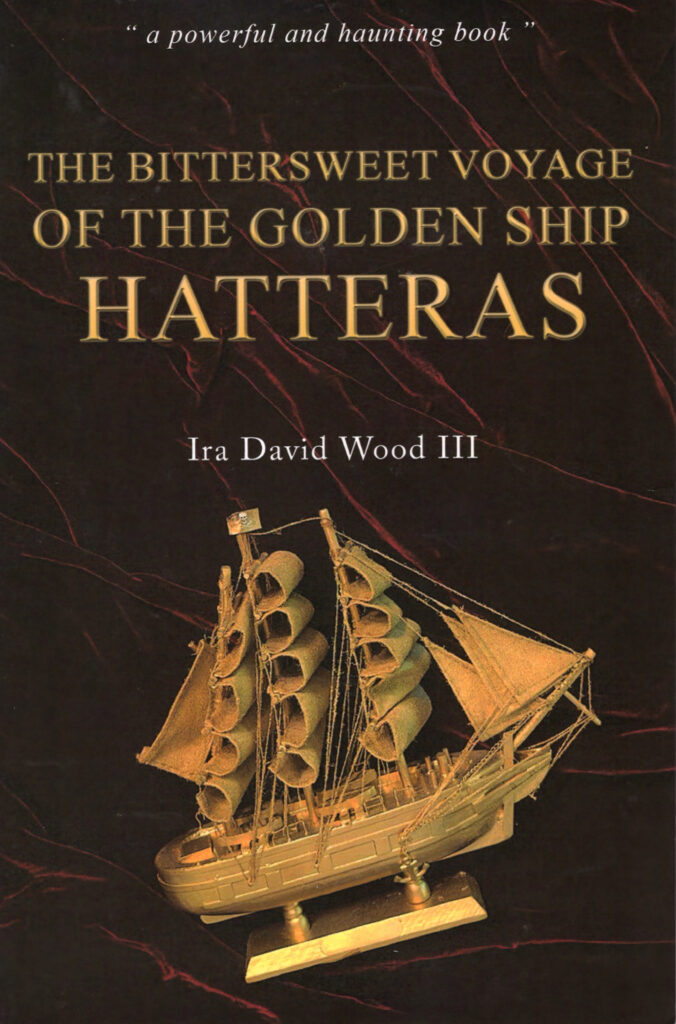
The Golden Ship Hatteras is a wonderful romance set on Hatteras Island—Avon, to be exact— at the turn of the 20th century. Wood, who has had a career in theater and movies, writes with a cinematic eye for imagery and action. Some of the scenes in the book seem to leap off the page in a three-dimensional picture of the moment.
Up-the-Road Down-the-Road, Kitty Hawk Village from the Beginning by Bill Harris
Bill Harris, who passed away in 2017, had deep roots in Kitty Hawk. At some point 200 plus years ago, the first of his ancestors decided that an almost deserted place of swamp and forest by a shallow bay was the place to settle, and Up-the-Road Down-the-Road tells the story with amazing detail that creates far more than a simple history of the town.
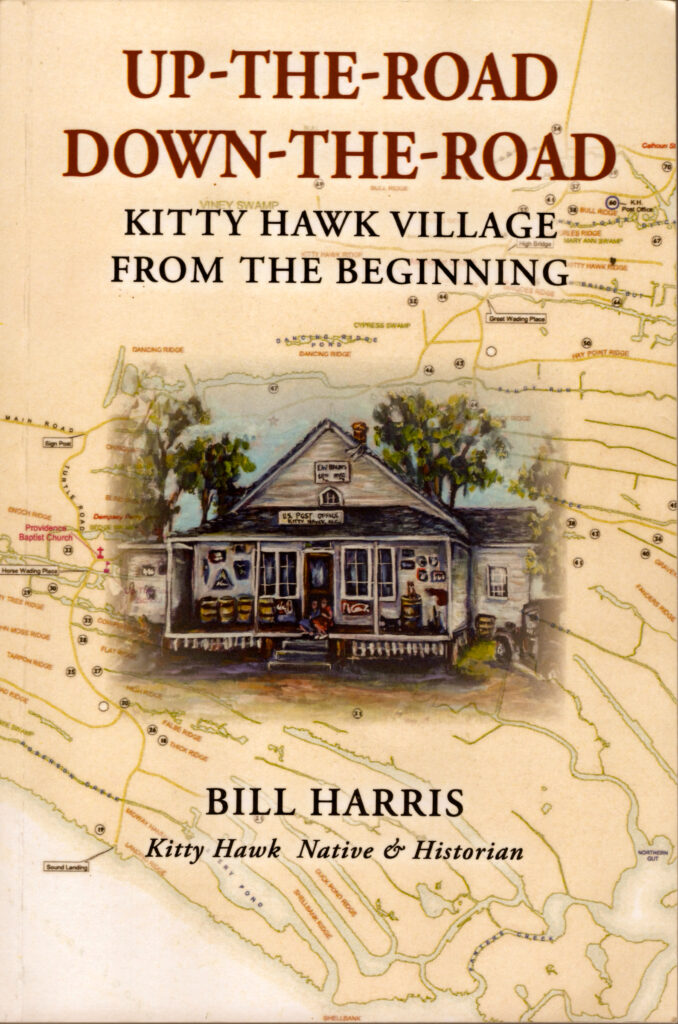
Bill was a lot of things in his life—he was in the Coast Guard, he had a 38-year career with the National Park Service, and was at one point the mayor of Kitty Hawk. The one constant through everything was his love of history. It’s impossible to say when that love affair began, but his senior project in 1961 and 1962 as a history major at Guilford College in Greensboro was interviewing and recording the memories of older Kitty Hawk residents. Those recordings, with clear memories reaching back to the 1880s and 1890s, are at the Outer Banks History Center and are a treasure trove of what life was like at that time.
Those recordings were the beginning of an almost 60 year odyssey to write the history of the town. He managed to finish writing the book before he passed away but left it to his daughter, Judith Fearing, to get the book published. There were some delays, but the book just got to local stores, and it offers a fascinating and meticulously researched look at the history of Kitty Hawk.
Manteo: A Roanoke Island Town by Angel Khoury
Angel Khoury may have written the definitive book on the history and happenings on Roanoke Island in “Manteo: A Roanoke Island Town.”
First published in 1999 to commemorate the 100th anniversary of the town of Manteo’s incorporation, the book has just been reissued in time—barely—for the 125th anniversary of the event. There’s a new introduction, and the new cover is a stunning image of the Roanoke Lighthouse at sunset, replacing the original black and white cover, which was nice but nothing at all like the new one.
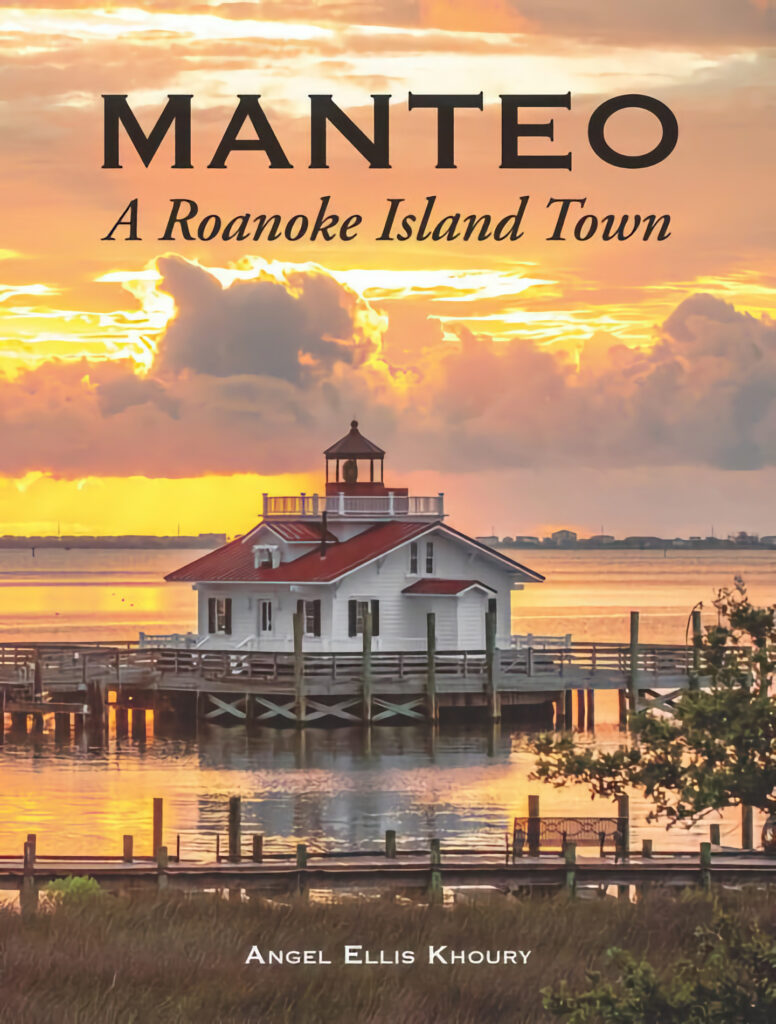
Filled with little known anecdotes and stories of the characters and events that created the history of Manteo, even out of print the book remained popular and a regularly requested title for local bookstores.
The reissue has been printed in limited quantities, so it may disappear from bookstore shelves quickly.
Shipwrecks of the Outer Banks: Dramatic Rescues and Fantastic Wrecks in the Graveyard of the Atlantic by James Charlet
Very few people know as much about the history of the Graveyard of the Atlantic and the ships that sailed the treacherous seas off the Outer Banks coast than James Charlet. For 10 years, he was the site manager at the Chicamacomico Life-Saving Station in Rodanthe. He also spent 24 years teaching high school history in North Carolina classrooms. So he knows his history.
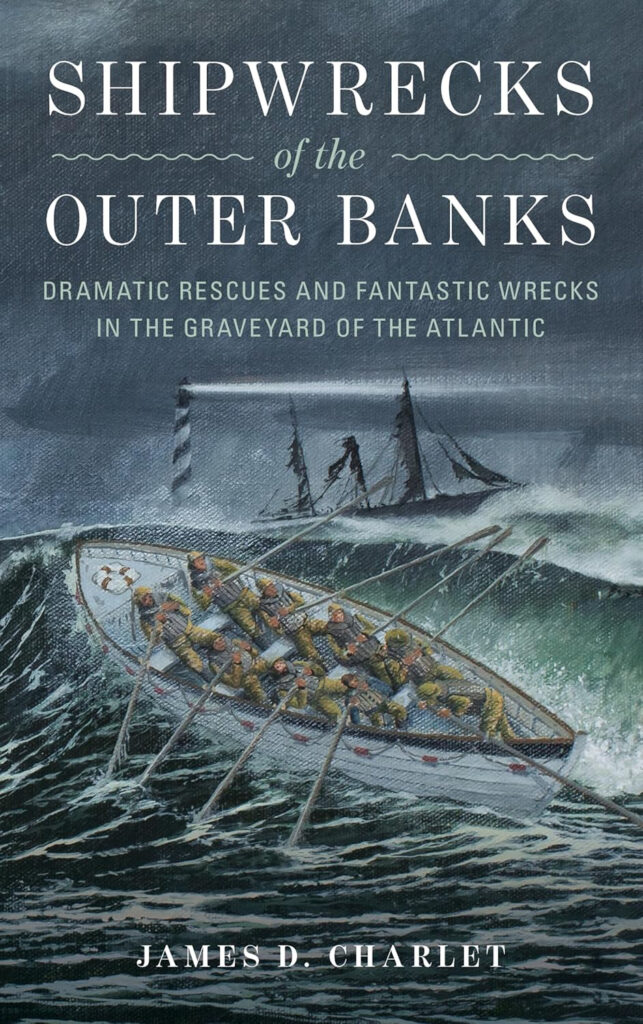
What sets Dramatic Rescues apart from other books about the shipwrecks off the Outer Banks coast is he takes the time to explain the lifesaving measures and what created the conditions that has led to more than 600 documented shipwrecks.
This is an outstanding book for anyone who wants to really dig into the details of what happened and why.
The Best Outer Banks Children’s Series, Suzanne Tate, with illustrations by James Melvin
Suzanne Tate’s Nature Series is as good as any children’s book can be. The illustrations by Outer Banks artist James Melvin could stand alone as framed pictures in an art gallery, and the stories, written on a pre-K to seven-year-old level, have been entertaining children since Crabby & Nabby, A Tale of Two Blue Crabs was published in 1988.
What really makes the books stand out, though, is Tate has done her research and when she describes the life of a hermit crab or a tuna, it’s accurate.
With more than 35 books available, it’s hard to pick out a favorite, but Merri-Lee Monarch, A Tale of a Big Trip is one that combines a wonderful story as Tate tracks the migration of monarch butterflies from the Outer Banks to Mexico and back again. Melvin’s illustrations are startling in their beauty.

Tate and Melvin also collaborated on a series of children’s books about the history of the Outer Banks. The history series books are somewhat difficult to find, but they are a great introduction to the time of the Wright Brothers or the Outer Banks during the Civil War.
Tommy Tuna is the last book published in the Nature Series, and unfortunately, Suzanne, who is well past 90 and approaching 100 years of age, has lost her eyesight and does not feel she can write a book if she cannot see the words she has written.
Two favorite authors who have passed away, but we recommend
Harrison Weaver Mystery Series, Joseph Terrell
Local author Joseph Terrell’s Harrison Weaver mystery series are wonderfully entertaining and filled with characters that readers will come to care about and identify with.
Harrison Weaver, his protagonist, is a crime writer who moved to the Outer Banks following the death of his wife. He had hoped that he would be reporting on crime in distant places, but he soon found that murder doesn’t take a holiday.
The cast of characters is delightful. There’s Janey, Weaver’s parakeet, Chief Deputy Odell Wright, Elly—Weaver’s love interest, and SBI Agent Ballsford Twiddy aka Balls. All of them are carefully crafted characters who play important roles as the plots develop.
It’s hard to pick out any favorites, but here are two that are great introductions to the series.
Last Blue Moon in May features Chief Deputy Odell Wright prominently in a cold case file dating back to the day his nine-year-old sister disappeared. The story becomes a tale of undying love, perseverance, and ultimately closure.
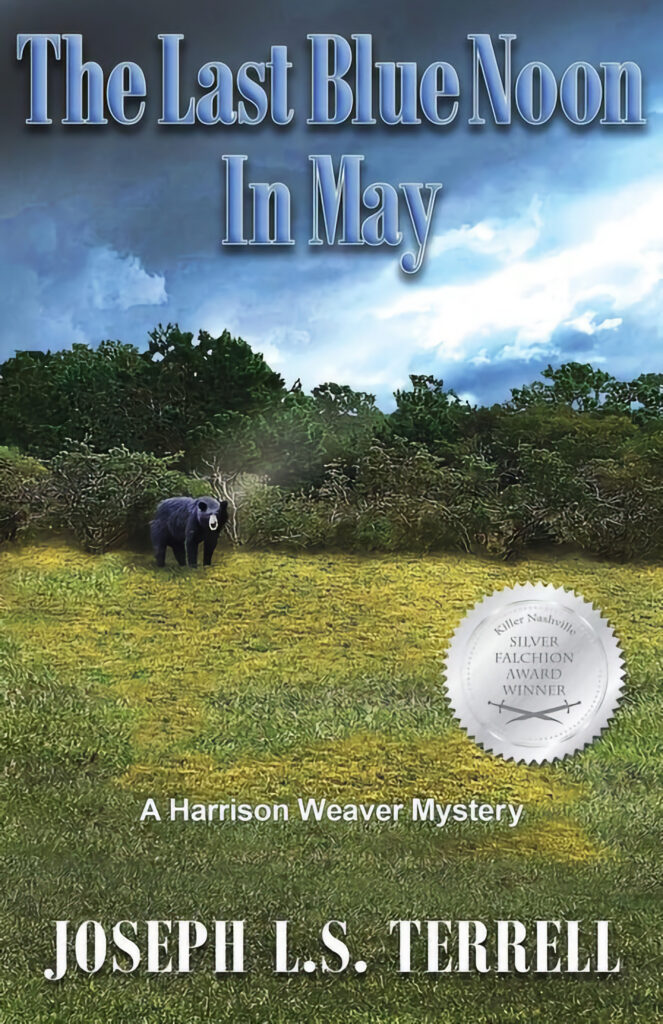
In Deadly Dreams of Summer, Weaver finds himself deep in the world of human trafficking. The case is, of course, solved, but along the way, the human cost is portrayed with an unblinking eye.
Especially in Deadly Dreams of Summer, but in all of his Harrison Weaver novels, Terrell does his research, so the plots carry with them an element of realism.
Joseph Terrell passed away in 2021.
Graveyard of the Atlantic: Shipwrecks of the North Carolina Coast by David Stick
Graveyard of the Atlantic was the first book that Outer Banks historian David Stick wrote, and it was seminal work. Meticulous researched, accurate in every detail, and very well written, it is still used as a reference book even though it was published in 1952. And it’s still in print.
However, Graveyard of the Atlantic was just one of a series of books David wrote about the history of the Outer Banks. Also worth seeking out are The Outer Banks of North Carolina, 1584-1958, and Roanoke Island: The Beginnings of English America.
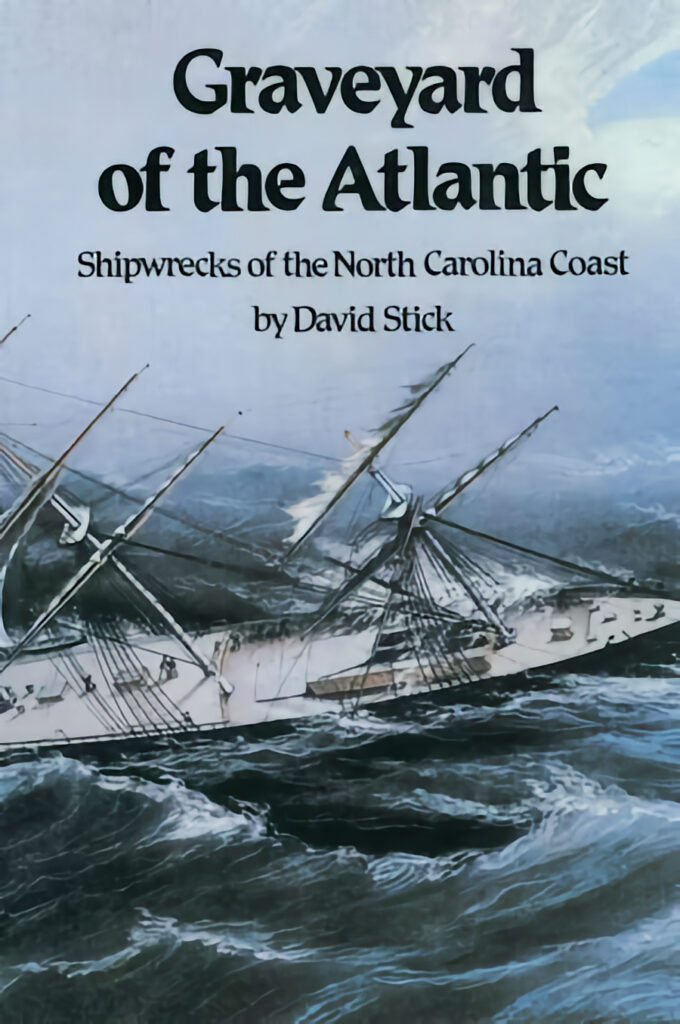
Over the course of his writing career, David wrote more than a dozen books, all of them focused on history. To give a sense of how serious he was as a historian, he donated his personal history research collection to the state of North Carolina, and it was used to create the Outer Banks History Center.
David Stick died in 2009.
Other Books about the Outer Banks
Nights in Rodanthe, Nicholas Sparks
We have to start here because it’s probably the best-known book about the Outer Banks. And the movie, starring Richard Gere and Diane Lane, was shot in Rodanthe, giving it an air of authenticity in spite of its fictional roots.
It’s pure romantic fiction, but Sparks gets high marks for providing a compelling backstory. Dr. Paul Flanner—for movie buffs, that was Richard Gere—is a surgeon trying to come to terms with his humanity, and Adrienne Willis (Diane Lane) is sorting through the ashes of a failed marriage and changes in her life.
They meet at a beautiful seaside inn and nature takes its course, although not without some personal angst thrown in.
Then there’s the hurricane. As a metaphor for their lines, what they are going through and the growing tempest of their romance, it’s perfect.
For those of us who live here or our regular visitors, well, staying in the north end of Rodanthe when a hurricane has drawn a bullseye on the S Curves would not be considered a wise decision, but it does make for an exciting focus for the book and movie.
Perhaps to underline how dynamic the north end of Rodanthe is, the Inn at Rodanthe where the movie was filmed, had to be moved to save it.
Outer Banks, Anne Rivers Siddons
Another bestselling author writes about the Outer Banks.
Siddons’ novel Outer Banks is a more textured and complex book than Nights in Rodanthe. Both books feature characters trying to reconcile their past with who they are in the present.
Outer Banks brings together four women who had been friends in college. Twenty-eight years after leaving school, the changes in their lives have been profound. There is bitterness, betrayal, and resolution as the women come together after their long absence from one another.
The book is still firmly in the romance novel spectrum, but for someone who is looking for something in that genre that is a little more nuanced, Outer Banks works well.
Summer House Series, Jenny Hale
Jenny Hale has written an Outer Banks Summer series that include: Summer House, Summer by the Sea, and The Summer Hideaway.
For fans of romance and doughty heroines, they are the perfect read for the beach. Filled with wonderful descriptions of the Outer Banks in the summer, love, and friendship, Hale has earned a devoted following.
My Ex-Best Friend’s Wedding, Wendy Wax
A bit more than a typical romance. My Ex-Best Friend’s Wedding explores what it means to be true to yourself and the sacrifices that may entail. Very much in the romantic novel style, but with some interesting soul searching.
The Coffin, Deborah Dunn
A double mystery novel, Dunn places her protagonist, Andrea Warren, on the Outer Banks in search of what was truly the fate of the colonists of the Lost Colony.
Warren is searching for answers—answers to the Lost Colony and answers to why her father committed suicide when she was a child. Yet as she peels back layers of archeological mystery, she finds there are people who don’t want her answering those questions, and they will go to any lengths to stop her..
A Death Long Overdue, Eva Gates
Who would have thought that a librarian’s life could be so exciting, but a 40th reunion on the Outer Banks, the body of the former director of her library floating in the water, and threats on her life change everything.
Outer Banks Books for Children
Suzanne Tate’s Nature Series is by far the best known of the Outer Banks children’s books, but it is by no means the only ones. Here are a few more suggestions.
Captain Stumpy by Herbert and Jeremy Bliven
Wonderful illustrations and a fun read featuring peg-legged pirate cat Captain Stumpy, who manages to outwit his arch-rival Fluff Bucket. Written and illustrated by father and son team Herbert and Jeremy Bliven, the book is ideal for pre-k to seven or eight years of age.
Taffy of Torpedo Junction by Nell Wise Wechter
An oldie but a good one. Taffy of Torpedo Junction is based on some of the things that author Nell Wise Wechter witnessed as a teacher on Hatteras Island during WWII. The language in the book is a bit dated now, but it still tells a wonderful story—one that has captivated preteens for years.
Taffy has reason to believe there is a nest of Nazi spies coming ashore on Hatteras Island, and her efforts to track the spies and alert the authorities make for an exciting read. It’s also a great introduction to the history of the Outer Banks during WWII when German U-boats sank so many ships off the Outer Banks that it gained the nickname “Torpedo Junction.”
The Summer of Lost and Found by Rebecca Behrens
An excellent young adult book, The Summer of Lost and Found works on so many levels that it becomes a delightful read.
Told through the eyes of protagonist Neil Dare, it’s sort of a city mouse, country mouse tale as Neil is dragged out of her comfortable New York City life for a summer on Roanoke Island.
There’s some subtle humor as well. Neil and her mother checked into their Roanoke Island rental late at night, hungry and tired, only to discover no one delivers after 9:00 p.m. Coming from a world of 24-hour delivery, Neil is aghast.
She does adjust. In fact, she begins to thrive in her summer home, making friends and digging into the history and mystery of the Lost Colony.
As she discovers more about history, she also has to confront the struggles of her parent’s marriage.
The dialogue is snappy and real; author Behrens fills the pages with real Outer Banks settings. And the backstories make it a book young adult readers will really enjoy.





